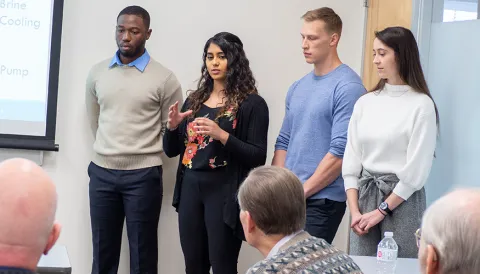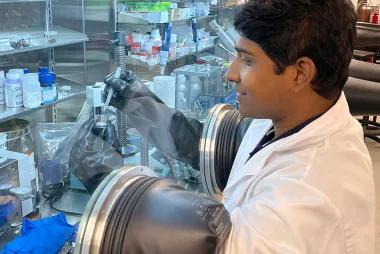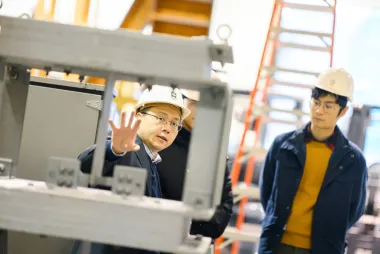Students design novel carbon emissions process

Each year, fourth-year chemical and biological engineering students in the Chemical and Biological Process and Product Design Course 453/454 are required to embark on a capstone project that tackles a real-world problem and comes up with a proposal for a viable solution to the issue. This year, two of the sixteen capstone projects were sponsored by Global Energy Horizons Corp (GEHC) via CleanBerry Solutions. CleanBerry holds the worldwide exclusive license for several patents on an innovative energy-efficient process that provides a novel approach to carbon (CO2) storage. The process, which has been in development for more than five years, was invented by Gary Pope and Stephen Bryant at the University of Texas at Austin. (Pope is now retired, and Bryant is currently a Canada Excellence Research Chair and professor of chemical and petroleum engineering at the University of Calgary.) For their capstone projects, the students aimed to develop and design a chemical process that would help in delivering this project to the market.
On January 14, the two teams presented their preliminary process designs to an audience that included representatives from GEHC/Cleanberry, the BC government — who are supportive of the potential development and commercialization of the technology for use in the handling and treatment of green-house gas emissions — chemical and biological engineering faculty, and fellow students. One group presented their designs for the use of the technology in the handling of point-source emissions, such as a natural gas treatment facility. The second presented their designs on the use of the technology in capturing CO2 from the environment by integrating a separate Direct Air Capture (DAC) process.
Attendees:
GEHC/Cleanberry: Henry D. Tiffany (Chairman), Brian de Clare (CEO) (by video conference) and Steve Abbott (COO)
BC Government: Daniel Green (Executive Director, Innovative Clean Energy Fund / Alternative Energy Branch) and Stephen Brydon (Director, Innovative Clean Energy Fund / Alternative Energy Branch)
UBC Chemical and Biological Engineering faculty: Charles Haynes (Department Head), Jim Lim (Professor), Jonathan Verrett (Instructor) and Sergio Berretta (Adjunct Teaching Professor)
Student teams:
CO2 Sequestration and Storage in Saline Aquifers: Josh Agarwal, Ola Akinsunmade, Fiona D’Silva, Shams Elnawawi, Caleb Enns, Tara Green, Thomas Johnson and Ife Olaifa
Study of Direct Air Carbon Capture and Storage: James Cheon, Nick Clifford-Moss, Rory Dunbar, Shawn Esquivel, Ryan Ghirra, Mikayla Hong, Marc Ostertag and Sarah Stumpf


